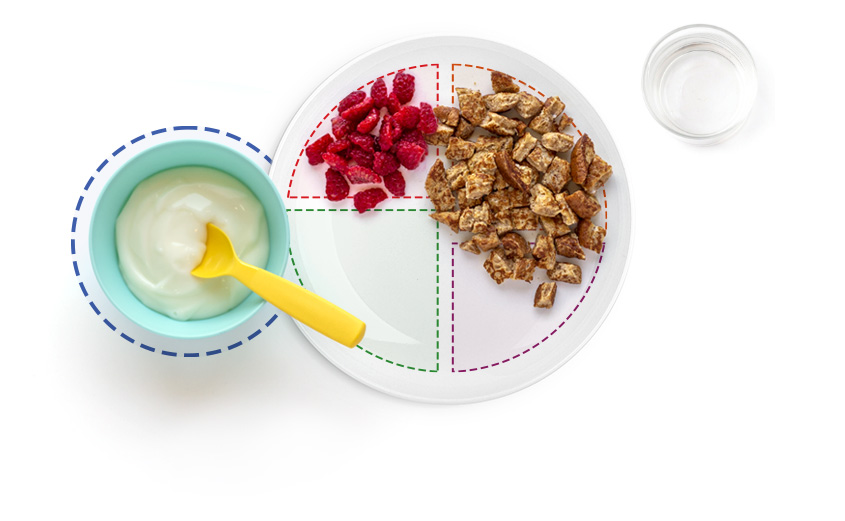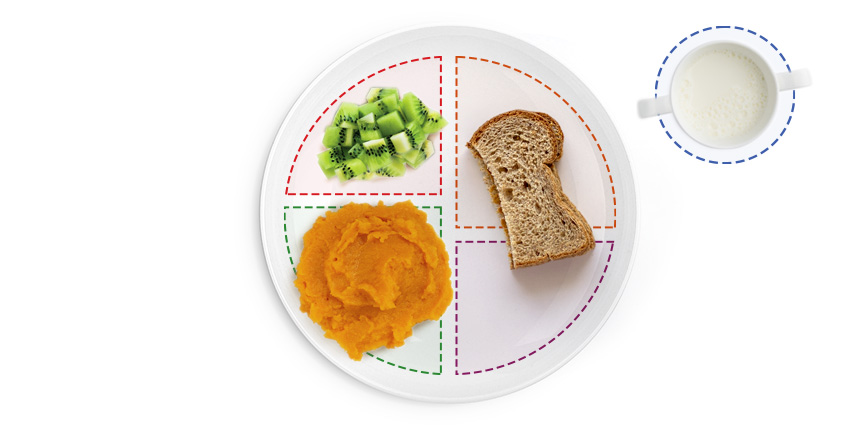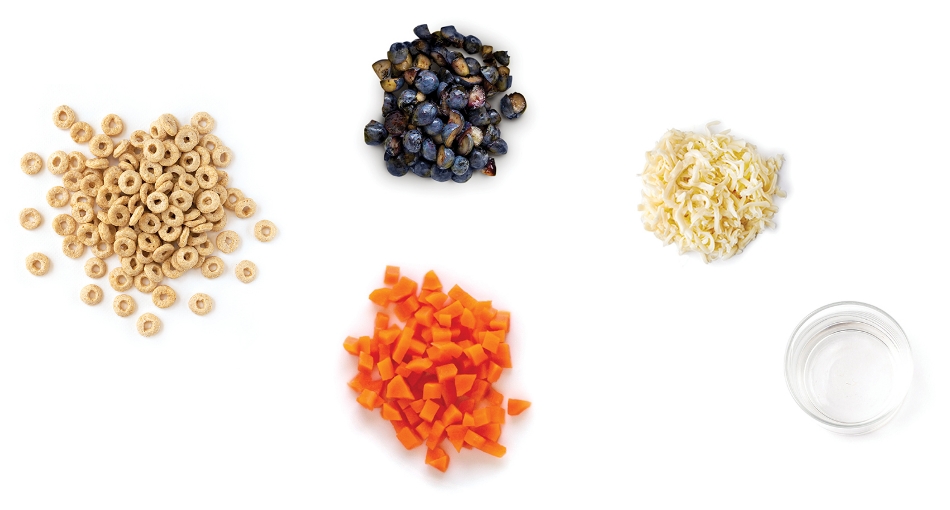I feel proud when I get to choose.
What
- I can eat what everyone else eats. You don’t need to make something special for me.
- Let me decide what I will eat from the foods you offer.
How
- Give me a choice when possible. Ask me, “Do you want peas or carrots with dinner?” or “Would you like red or green apple slices?”.
- Offer me a variety of foods, even ones you don’t like. Let me try them to learn if I like them.
- If I don’t like a new food right away, that’s okay! Offer it again at another time. It might take 10 or more times before I decide to try it.
When
- My routine is important. Let’s try to eat at the same times every day.
- If I don’t want to eat at a meal or snack, tell me I will have another chance to eat at the next meal or snack time.
- Remember, I only need water between meals and snacks.
Where
- I learn by watching you. Sit and eat the same foods that you offer to me.
- Teach me I am part of the family. I can help by wiping off the table and tearing lettuce or greens for salad.
Here are some examples of what meal and snack portion sizes might look like on my plate.
Breakfast
¼ cup diced raspberries
½ cup low-fat yogurt

½ slice, cut up whole grain french toast
½ cup water
Lunch
¼ cup diced kiwi
½ cup cooked, mashed sweet potato

1 slice whole grain bread
with 1 tablespoon peanut butter spread thin
½ cup low-fat milk
Snacks

½ cup dry cereal
½ cup cooked, chopped carrots
½ cup chopped blueberries
½ cup shredded cheese
water between meals and snacks
Dinner
½ cup cooked, chopped green beans
½ cup low-fat milk

½ cup cooked, diced tomatoes
with ½ cup cooked whole grain pasta
with 2 tablespoons baked, chopped chicken
Daily Suggested Food Group Amounts
2 servings a day
1 serving = ½ cup
(1 cup total)
Cooked or soft, raw fruit.
Mashed, sliced, or chopped.
Offer a variety: red, yellow, orange, blue, and green.
2 servings a day
1 serving = ½ cup
(1 cup total)
Raw or cooked, mashed, sliced, or chopped veggies.
Offer a variety: dark green, orange, red, yellow, and purple.
6 servings a day
1 serving = ½ ounce
(3 ounces total)
Whole grain bread, tortillas, rice, or noodles.
Dry or cooked cereal.
6 servings a day
1 serving = ½ ounce
(3 ounces total)
Whole grain bread, tortillas, rice, or noodles.
Dry or cooked cereal.
2 servings a day
1 serving = 1 ounce
(2 ounces total)
Cooked, chopped meat, poultry, or fish.
Eggs.
Cooked beans, peas, or tofu.
Peanut butter.
2 servings a day
1 serving = 1 ounce
(2 ounces total)
Cooked, chopped meat, poultry, or fish.
Eggs.
Cooked beans, peas, or tofu.
Peanut butter.
4 servings a day
1 serving = ½ cup
(2 cups total)
Low-fat milk.
Yogurt.
Cheese.
Dairy
4 servings a day
1 serving = ½ cup
(2 cups total)
Low-fat milk.
Yogurt.
Cheese.
Look what I can do!
- I can feed myself with a spoon or a fork. I still use my fingers so help me wash my hands before and after I eat.
- I can run, jump, and climb. Let’s be active together!
- I learn new words from you. Teach me the names and colors of foods and other objects. I love it when you read to me.
Keep me safe and healthy.
Now that I am 2 years old, it’s time for me to switch to low-fat milk, cheese, and yogurt.
I’m still learning to chew food properly. Please DON’T give me foods I could choke on like whole nuts, whole grapes, seeds, hot dogs, or hard candies, and sit with me while I eat.
Take me to the doctor for my check-up. We can see how much I’ve grown. Visit www.cdc.gov/vaccines/schedules to see when I am due for shots.
Help me brush my teeth at least twice a day with a small, soft toothbrush and smear of toothpaste. Take me to the dentist to have my teeth checked.
Play with me and help me stay active. If I have screen time, keep it limited and interact with me.
Avoid tobacco or nicotine products, alcohol, marijuana, and other illegal drug use to keep our family healthy and safe. For support with quitting tobacco or nicotine products, visit www.quitnow.net. For support with quitting alcohol or other drugs, visit www.findtreatment.gov. Your WIC Nutritionist can also provide additional resources.